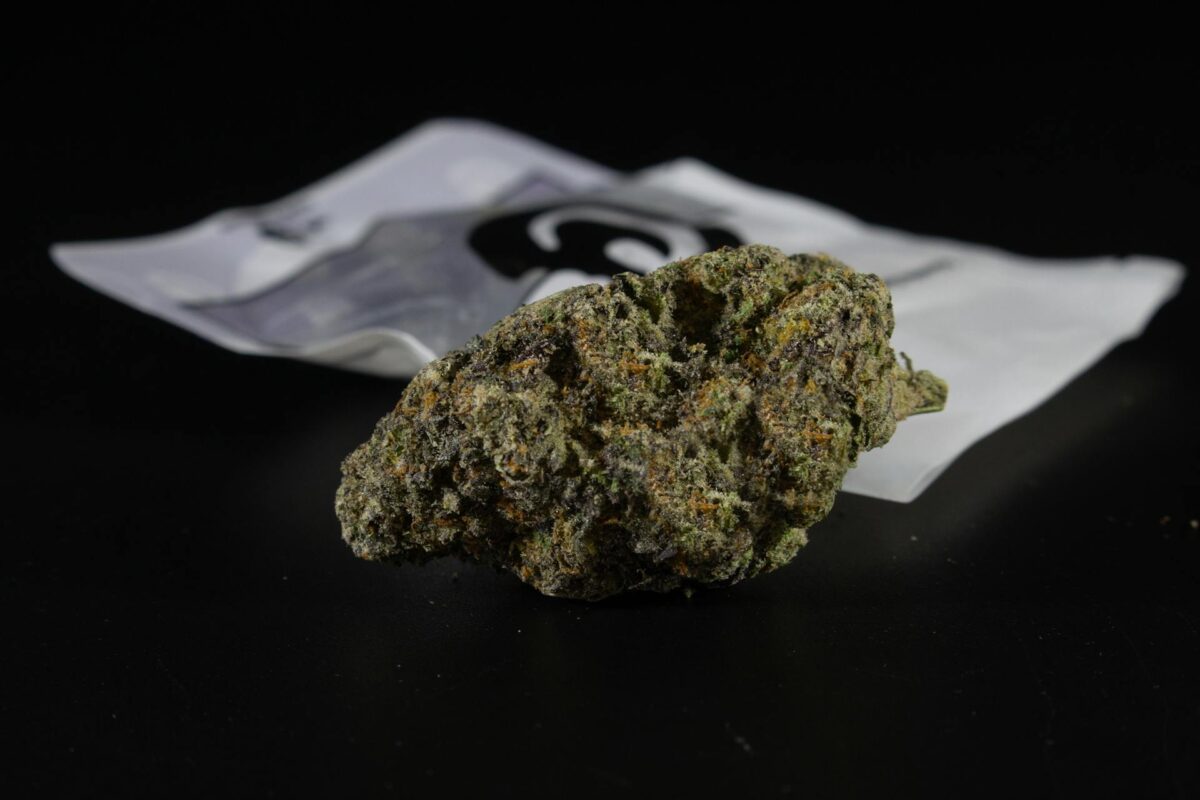THC in Sativa-Dominant Hybrid Weed Strains Offers Relief for Sickle Cell Patients
Sickle cell disease (SCD) affects around 100,000 people in the United States. Over 90% of those affected are non-Hispanic Black or African American, while an estimated 3% to 9% are Hispanic or Latino. It is a rare blood disorder that causes red blood cells (RBCs) to become hard, sticky, and crescent-shaped, like a sickle.
Management focuses on avoiding pain episodes, relieving symptoms, and preventing complications. Evidence suggests that cannabis with high levels of tetrahydrocannabinol (THC) can help manage these symptoms. If you’re dealing with this condition, you might want to buy weed online to assist with your treatment.
Contents
Key Takeaways
- 36% of subjects who smoked cannabis found relief from pain symptoms.
- THC and its analogs bind strongly to CB1 and CB2 receptors, which help manage discomfort when activated.
- Sativa and Sativa-dominant strains contain a high amount of tetrahydrocannabinol versus cannabidiol.
Sickle Cell Disease: Treatment and Management
Sickle cell disease is an inherited disorder that affects hemoglobin, the protein responsible for carrying oxygen throughout the body. Healthy RBCs are disc-shaped and flexible to flow easily through blood vessels.
In this disorder, a genetic mutation causes RBCs to become crescent—or sickle-shaped. These cells are less flexible and can obstruct blood flow, which leads to issues such as stroke, eye problems, infections, and painful episodes known as pain crises.
Management and Treatment
SCD treatment includes medications, transfusions, and blood and marrow transplants. The treatment may begin with antibiotics.
- Red blood cell transfusions: Increase the number of RBCs in your body and provide normal, non-sickled cells.
- Voxelotor: Prevents RBCs from sickling and binding together and reduces the destruction of normal cells.
- Crizanlizumab: Prevent sickled red cells from sticking to your blood vessel walls.
- Hydroxyurea: Reduce or prevent several complications – discomfort, acute chest syndrome and severe anemia,
- L-glutamine: Reduce the number of discomfort crises.
- Stem cell transplant: Cure to SCD.
The standard treatments for this condition are well established, but some studies are exploring alternative options, including natural therapies like THC from weed.
What is THC?
THC, or delta-9-tetrahydrocannabinol, is the main psychoactive component in marijuana. It binds to receptors in the brain and influences memory, pleasure, movement, thought processes, concentration, etc.
It activates the brain’s pleasure centers, and its effects vary depending on the amount present in the specific strain. Higher levels lead to greater potency and a more pronounced impact on the body and mind.
Studies of Tetrahydrocannabinol and SCD
Two studies examined how the psychoactive compound can help manage the disorder’s symptoms. One study involved animals and the other involved humans. The results were quite promising and suggest that further investigation into its benefits is needed.
| Study Location | Methodology | Results |
| London, United Kingdom | 86 young adults with various types of SCD ( median age of 30)
Surveyed using a structured, self-administered anonymous questionnaire. |
|
| University of Minnesota | Utilized transgenic mice models.
Assessed pain-related behaviors using paw withdrawal threshold and withdrawal latency tests. Examined neurochemical changes in peripheral nerves, blood vessels, and spinal cord tissues. |
|
*CP 55,940 is a synthetic delta-9 THC that acts as a CB1 receptor agonist.
What Type of Weed Works Best?
Sativa products or Sativa-dominant hybrid strains are effective in managing SCD markers due to their high THC content and modest CBD levels, which work together to create an entourage effect.
Tetrahydrocannabinol and its analogs strongly bind to CB1 and CB2, key cannabinoid receptors in the body. CB1 is mainly in the central nervous system (CNS), while CB2 is primarily outside the CNS. Activating these receptors can help alleviate discomfort through different mechanisms. Research indicates that CB2 receptor activation can reduce inflammatory discomfort.
How Weed Treats SCD Symptoms
Pain is a common symptom of SCD, and tetrahydrocannabinol can be a practical addition to managing both pain and inflammation. Aside from this, it also targets other experiences that the patient may encounter, like anxiety and depression due to the condition and insomnia.
Pain Modulation
The main psychoactive compound interacts with CB1 and CB2 in the endocannabinoid system (ECS), which manages pain perception and inflammation. Binding to CB1 receptors in the CNS can modify signals and lessen pain sensation during vaso-occlusive events, a common and severe symptom.
Anti-inflammatory Effects
Chronic inflammation and tissue damage are common, and they cause the blockage of blood vessels. THC’s activation of CB2 receptors, primarily located on immune cells and peripheral tissues, may help to dampen inflammatory responses. This could also mitigate the inflammatory processes that contribute to aches.
Psychological Relief – Depression and Anxiety
Chronic aches can also lead to psychological distress, such as anxiety and depression. The psychoactive cannabinoid may provide psychological relief by inducing relaxation and improving mood.
In a double-blind, placebo-controlled trial, 23 participants inhaled either vaporized cannabis or a vaporized placebo three times a day. The study found patients who used cannabis reported a notable improvement in mood.
Sleep Disturbance
Sleep disturbance and fatigue are key factors in a biobehavioral model of SCD. Tetrahydrocannabinol affects the CB1 receptors and can have a two-phase effect on sleep. Lower doses may reduce the time it takes to fall asleep, make falling asleep easier, increase slow-wave sleep, and extend total sleep time.
Buy Marijuana Online to Manage Your Condition
Ready to manage your symptoms with the best cannabis experience? Check out these high-THC or Sativa strains. Purchasing from a local dispensary offers delivery services so that you can stay comfortably at home, order weed online today.
| Strain | Type | THC content | Flavor | Experience |
| Red Congolese | Sativa | 29% | Earthy, woody, citrus, pine, and tropical fruit | Energizing high with mental clarity |
| Cereal Milk | Hybrid | 28% | Fruity, sweet milk left after a sugary cereal | Slightly sedatingf |
| Apple Fritter | Hybrid | 27% | Sweet, fruity, sour, and earthy | Promotes relaxation and reduces racing thoughts |
| Pink Runtz | Hybrid | 32% | Earthy, fruity, and sweet overtone | Relaxation and a burst of creative energy |
| Gelato | Hybrid | 28% | Fruity with blueberry and orange hints, woody | Highly euphoric, enhances focus, induces relaxation, and a profound sense of well-being |
Don’t want to smoke? These are convenient product options (edibles) with high psychoactive cannabinoids.
- Sour Gummies 600mg
- Strawberry Puffs 600mg
Sickle Cell Patients Can Buy Weed Online to Manage Discomfort
Pain is the most common side effect in patients with SCD. While analgesics can help manage the aches, they address only one symptom. Marijuana with high levels of tetrahydrocannabinol can alleviate discomfort and offer additional benefits, such as reducing sleep disturbances, inflammation, and psychological distress. Buying THC online is now easier, thanks to online dispensaries.
GetLoud Cannabis makes it simple to purchase your favorite cannabis products and best brands from the comfort of your home. We offer various products, including edibles, oils, concentrates, and buds. New customers can enjoy many discounts, while loyal customers can take advantage of bulk prices and significant savings to stock their needs.
Frequently Asked Questions
Is weed safe for people with sickle cell trait (SCT)?
SCT isn’t a disease. If you have SCT, you have inherited the gene from only one parent. People with SCT don’t have symptoms and can live a “normal” life. Weed is safe for people with SCT as it is for the general population.
Can CBD products work to manage symptoms of sickle cell disorder?
CBD has pain-relieving and anti-inflammatory effects. It interacts with receptors like G protein-coupled receptors and the TRPV1 channel. There isn’t much research on CBD’s effects in patients with SCD, but if you’re looking for a product with minimal psychoactive effects, choose one with low tetrahydrocannabinol or a 1:1 ratio.
How frequently should you use marijuana to manage symptoms?
The frequency depends on how many times you need to manage your discomfort and other symptoms. Some people use it once daily, either in the morning or before bed, while others may need to use it several times daily.
Related Articles:


